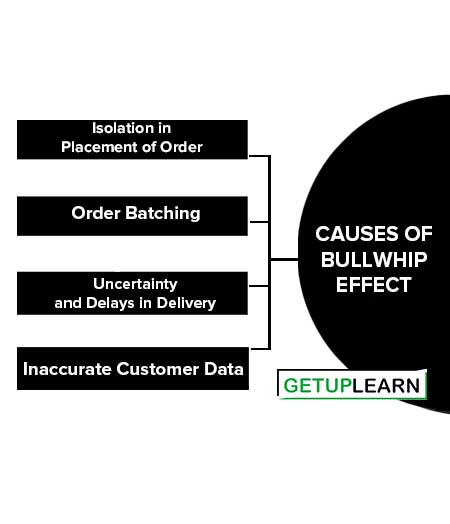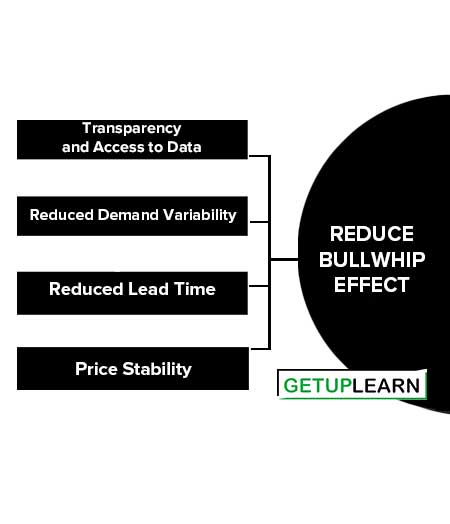Table of Contents
What is Bullwhip Effect?
The bullwhip effect derives its analogy from the whip used for taming bulls used in a bullock cart. The force applied at the rear end gets multiplied largely in the front end lashed at the bullock. A similar scenario prevails with fluctuations at one end that traverse through the chain.
Fluctuations at the retailers’ end get amplified at each higher level; by the time it reaches the manufacturers’ end, the variation is enormous. The effect is a shortage of gaming processes whereby each player in the chain tends to evade stockouts because of the sudden rise in demand.
In the process, each orders a quantity to the upstream member higher than its own needs. Consequently, the fluctuations tend to rise high, until it becomes absolutely enormous and multiplied, and nowhere in line with the actual fluctuations in customer demands.
Causes of Bullwhip Effect
These are the following causes of bullwhip effect:
- Isolation in Placement of Order
- Order Batching
- Uncertainty and Delays in Delivery
- Inaccurate Customer Data

Isolation in Placement of Order
Each member of the chain places an order into the higher stage based on its demands and irrespective of the actual demand values at the customers’ front. The order size is hence dependent on the demands at the immediately succeeding stage and independent of the market scenario.
Order Batching
Each order received from the downstream member is aligned to suit the needs of logistics, warehouse, and production requirements or to optimize suitable needs at each stage. As a result, the order size is independent of market demands but becomes a function of convenience and optimization of each stage independently.
Uncertainty and Delays in Delivery
Uncertainty in delivery caused by delayed deliveries or a history of missed delivery dates in the upstream partner compels the stage to raise the order size and prevent stock-outs.
Inaccurate Customer Data
The unavailability of customer demand data compels stages to make their own calculations of demand and of the orders to be placed upstream based on orders received.
Reduce Bullwhip Effect
The following are the methods to reduce bullwhip effect:

Transparency and Access to Data
There should be transparency in the flow of demand data from the customers’ end to the supplier’s end. This helps each stage to understand customer behavior in real-time and plan for orders accordingly. Real-time access to customer data and tracking of in-transit inventory facilitates attaining transparent data flow all along.
Reduced Demand Variability
In response to sudden surges in demand patterns, stages tend to raise the order size lest there would be a loss of goodwill due to stock-outs. A consistent demand pattern over a longer period, normally a year, can be obtained by maintaining low prices all along the time period as in Amazon’s Everyday Low Pricing (EDLP).
Reduced Lead Time
Reduction in lead time or orders can eliminate the shortage of gaming in the stages and facilitate dependence on real-time demand data.
Price Stability
Price stability through the elimination of quantity discounts discourages stages to place larger orders. This brings stability to the demand pattern along the stages.
What are the causes of bullwhip effect?
The causes of bullwhip effect are 1. Isolation in Placement of Order 2. Order Batching 3. Uncertainty and Delays in Delivery 4. Inaccurate Customer Data.
How to reduce bullwhip effect?
The points to reduce bullwhip effect: 1. Transparency and Access to Data 2. Reduced Demand Variability 3. Reduced Lead Time 4. Price Stability.
